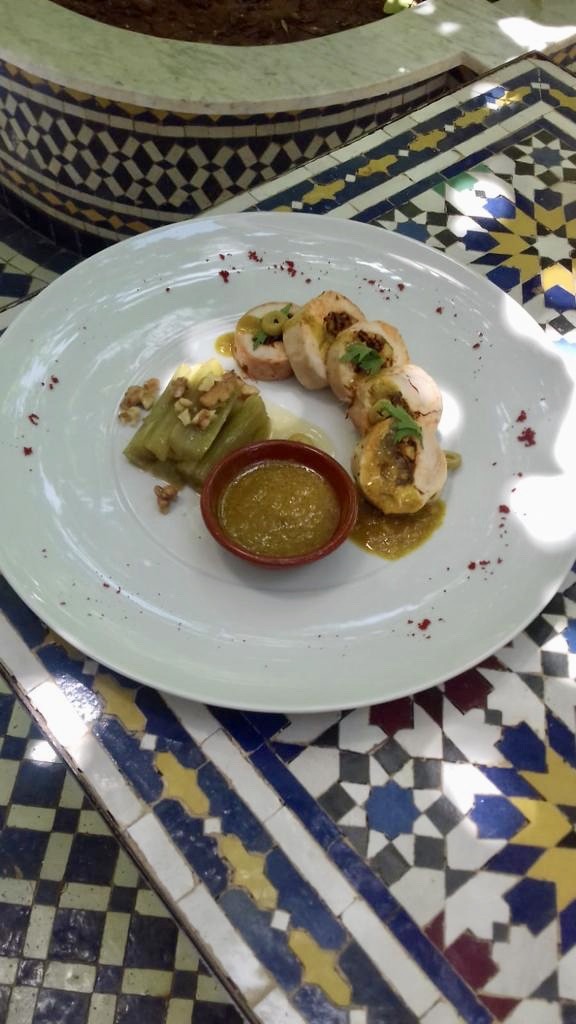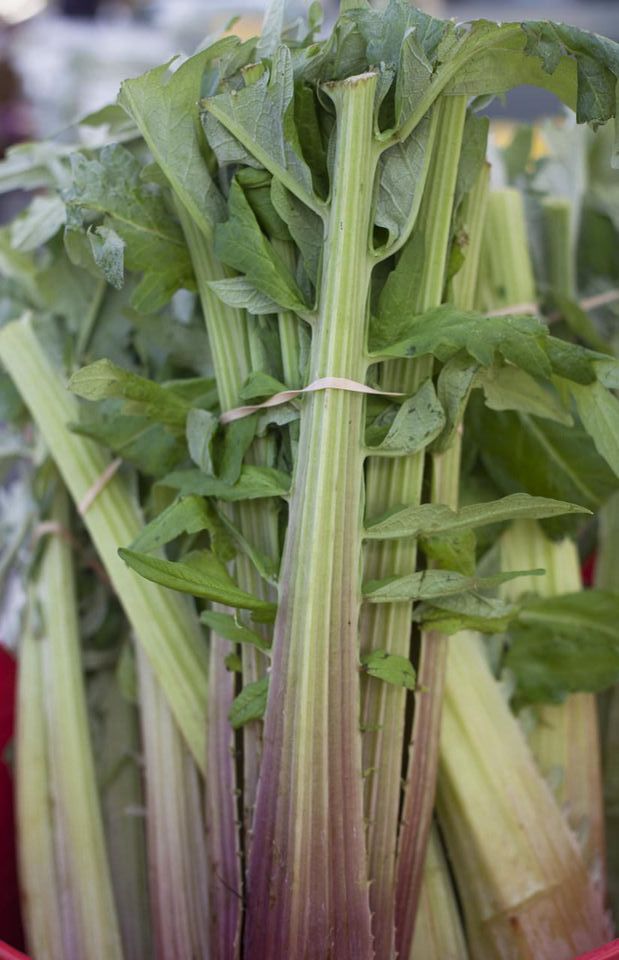What are cardoons?
Cardoons are closely related to artichokes and are part of the thistle family. Unlike the artichoke, where you would eat the flower bud, the stems are the tasty part of a cardoon. Cardoons take some careful prepping, but they’re definitely worth the effort.
Where to find cardoons?
Native to the Mediterranean region, cardoons are still popular today. They are grown and eaten in North Africa and other Mediterranean countries. Moroccans traditionally enjoy this winter vegetable in tajines mainly, but also in side dishes. Today, cardoons can be found on market stands in autumn as well as in winter.
How to cook cardoons?
At our Fez Cooking School at Palais Amani we teach how to cook traditional Moroccan dishes. Each traditional dish is served with one or several seasonal vegetables. In the next few months, if you happen to join one of our cooking workshops, you will probably come across cardoons in the local souks and learn all about them.

The stalks of cardoon are similar to celery stalks only bigger. The stalk of the cardoon is peeled and then cleaned before cooking. Remove the large leaves and the thin tops off the stalks. Then separate the stalks and use a peeler to remove the entire length of each side of the stalk. As a result, you will be removing any remaining prickles and tiny leaves.
The entire stalk of cardoon is covered in silver-hued strings. Start at the top of the stalk and peel downwards to remove the strings. Try to remove as many strings as possible so that the stalk takes on a fresh, green appearance.
Cardoons at Eden
Cut the stalks into chunks; then boil the cardoons with salt and lemon juice. Once they’re cooked, add some butter and two tablespoons of honey.
In our restaurant Eden at Palais Amani, we have showcased cardoons in one of our main dishes: “Chicken breast rolled with Moroccan Charmoula served honeyed cardoons & crush walnuts”. This savory and delightful dish is on our Market Moroccan menu for a couple of months. Come and try it out!
AV, October, 2019


